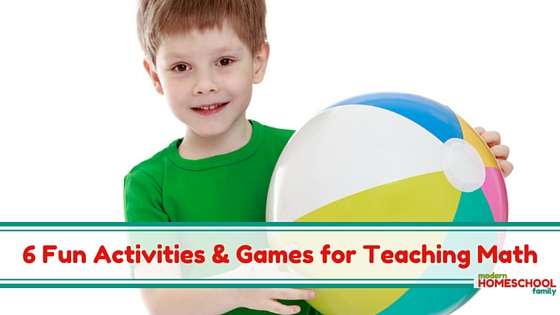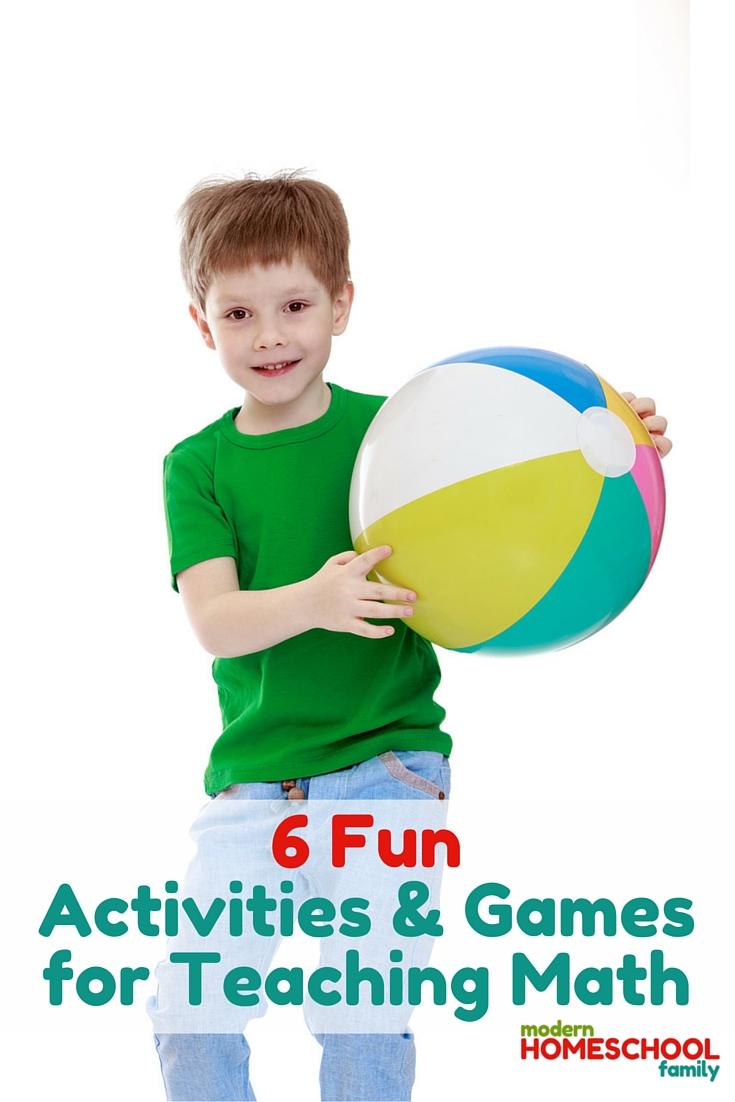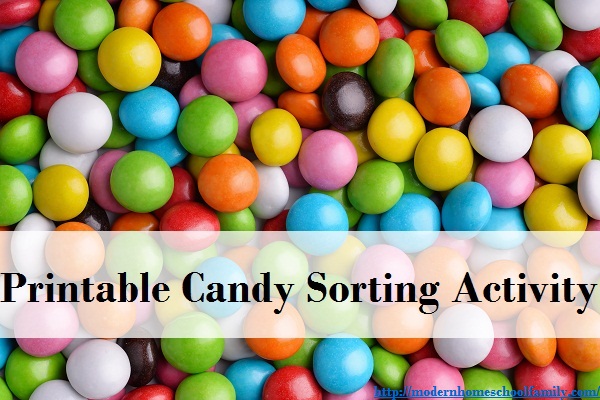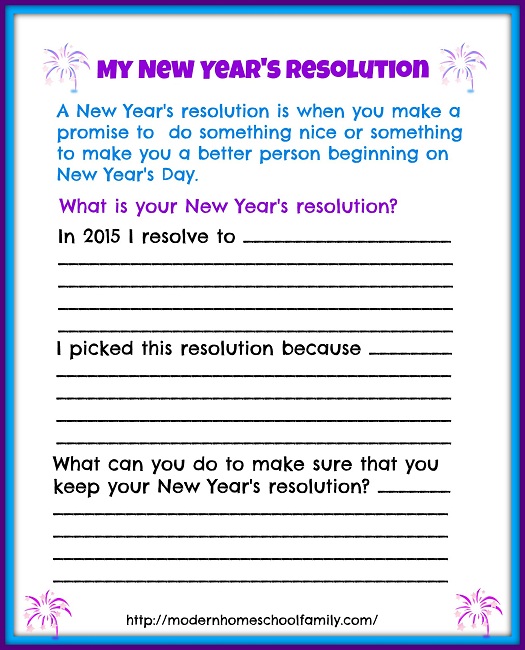
Pre-school and elementary school age children are eager to learn math skills at home with the right fun activities. Beyond using conventional worksheets and flashcards, using math games that involve large motor skills is not only fun but will help reinfornce the math concepts you are trying to teach. Your children can jump and hop as they learn math. Young children love to move, so when you combine math and movement, you are sure to have a winner!
6 Fun Math Activities and Games
BEACH BALL MATH requires you to section off a ball into many squares with a marker. Each square houses a math problem. You toss the ball to your child, and when he/she catches it, they answer the problem under their thumb. For young children the problem can be as simple as identifying numbers or shapes, and for older children it can be a way of practicing addition, subtraction, multiplication or division facts.
MATH TOSS is a favorite game for all ages. Paint and number shapes on a large foam board. In each shape, cut a hole big enough for a small beanbag to fit through. Being sure not to cover the holes, glue or staple the board to a large cardboard box. Your child tosses a beanbag into two of the holes and either adds, subtracts or multiplies the numbers together. Younger children can just identify the numbers or shapes. They can toss a beanbag into the even or odd numbers only.
SKIP JUMP MATH is a favorite game for young children. Using lighter colored vinyl, cut out shapes, put a number on each one with a marker, and tape them to the floor. Your child can jump from shape to shape, saying each number as they land. The children can skip count by 1’s, 2’s, 3’s,etc. They can jump in ascending or descending order. Skip jumping is a great way to introduce multiplication. Use two feet, one foot or jump from hands to feet.
SEWING SHAPES is a great craft and math activity for when your child is ready for a rest. Using colorful poster board, draw a (6-8”) circle, square, rectangle, triangle, and trapezoid. If possible, encourage your child to cut them out with safety scissors. Write the name of each shape on one side and the color name on the other side with a pencil. Have your child trace each name and color. Then punch holes around the perimeter of each shape about 1” apart. Count the sides on each shape or count the holes around the perimeter. Using a large needle and yarn, have your child sew around each shape. If they’re ready, introduce the concept of the perimeter. The yarn could be an inchworm moving around the perimeter of the shape. They can measure the shapes with a small ruler and even hang them in their room.
MONEY STORE is great fun. Let your child arrange empty food cartons or boxes to create a store. Either you or your child can put a price tag on each one. For young children the items may cost 1cent to 5 cents each, while older children can handle 10 cents to a few dollars. After shopping at the store they pay you with play money. At first, allow them to buy just one object. When they’re ready, increase the number of items.
MATH WAR can be modified for many age and skill levels. All you need is a deck of cards (minus the picture cards). Each one flips a card over and the first one to add the exposed numbers together wins those cards. You can modify this game and have the children subtract or multiply the numbers instead. Kids who didn’t want to learn their multiplication tables suddenly want to know the answers so that they will win the game.
Use your creativity! Any of these games can be modified to fit all age groups or concepts that you are teaching (even phonics or sight words). Create your own games using the kid’s favorite activities. It could be anything from “soccer math” to “math bingo.” I hope that I have sparked your imagination, so that you will invent innovative and exciting games for your kids. Have fun! I know your kids will.
Also published on Medium.





